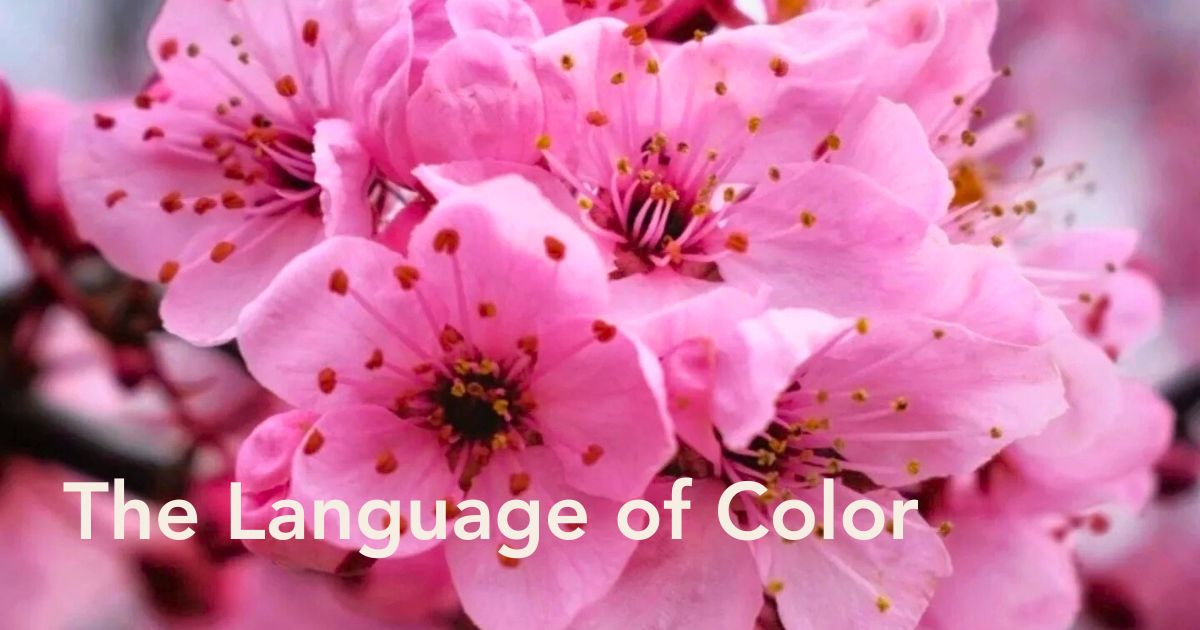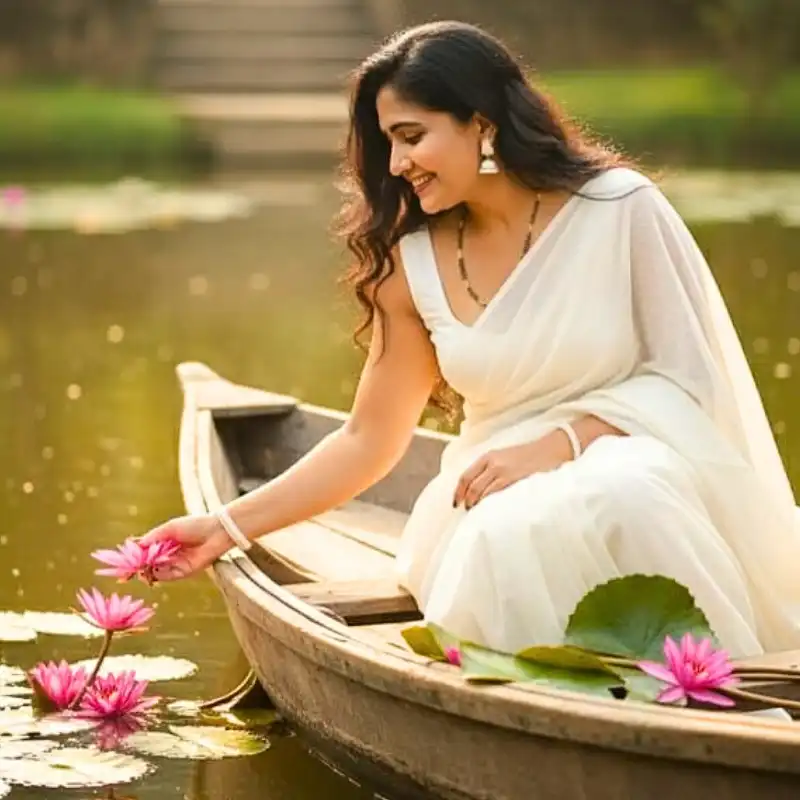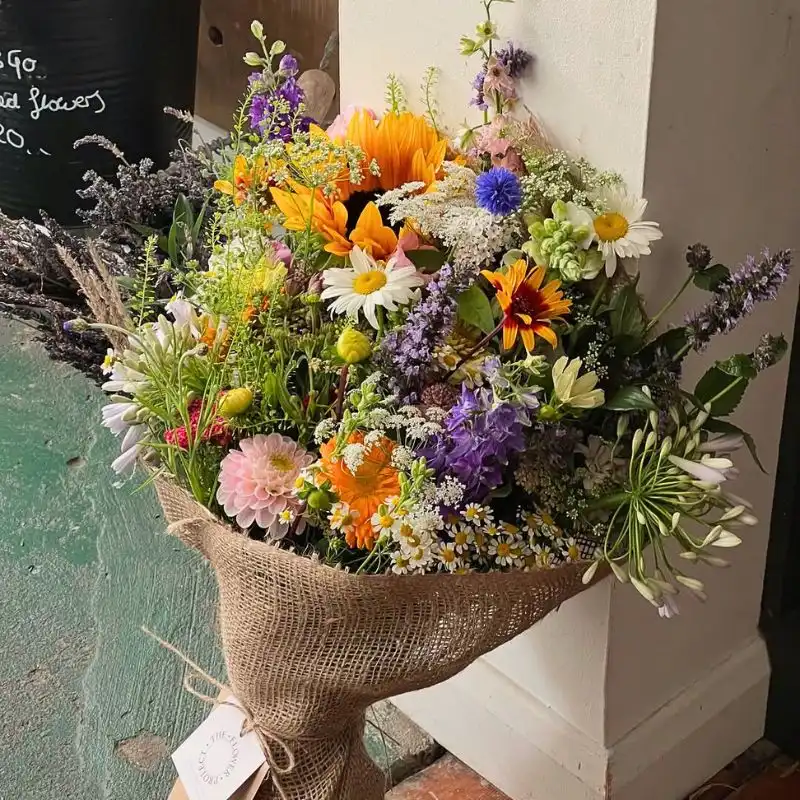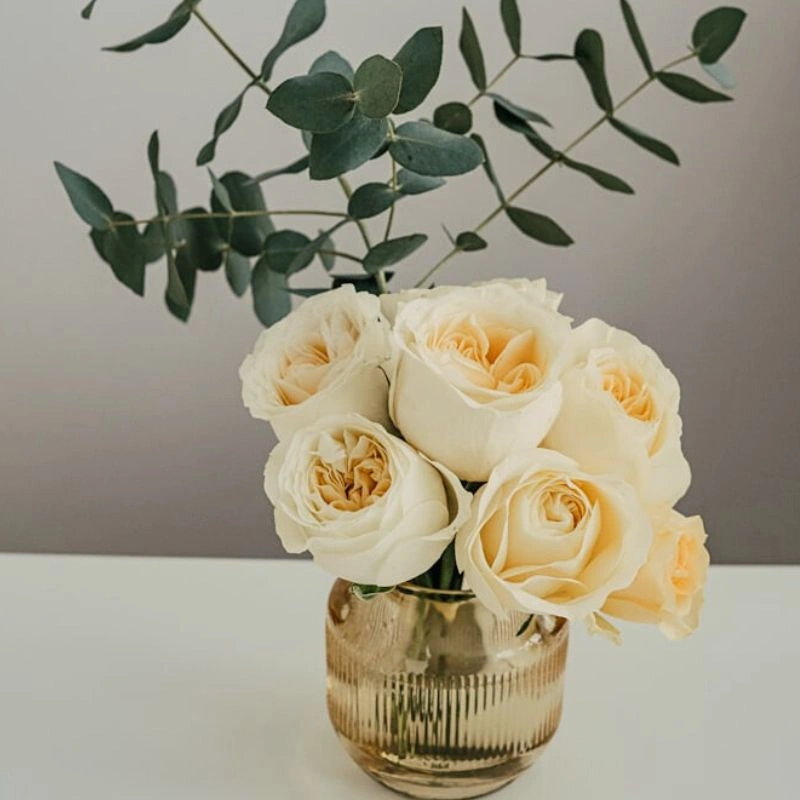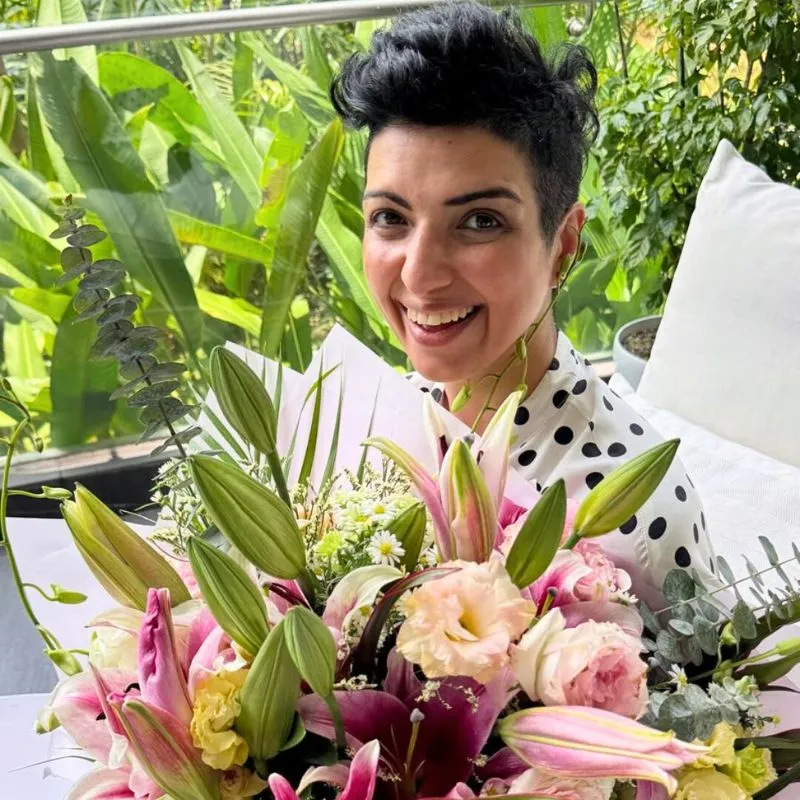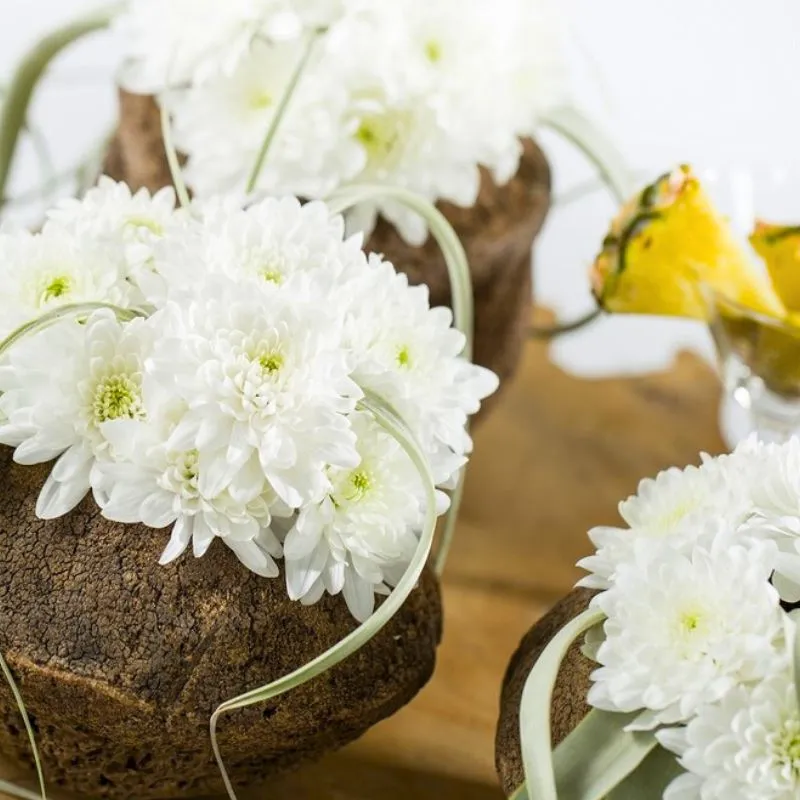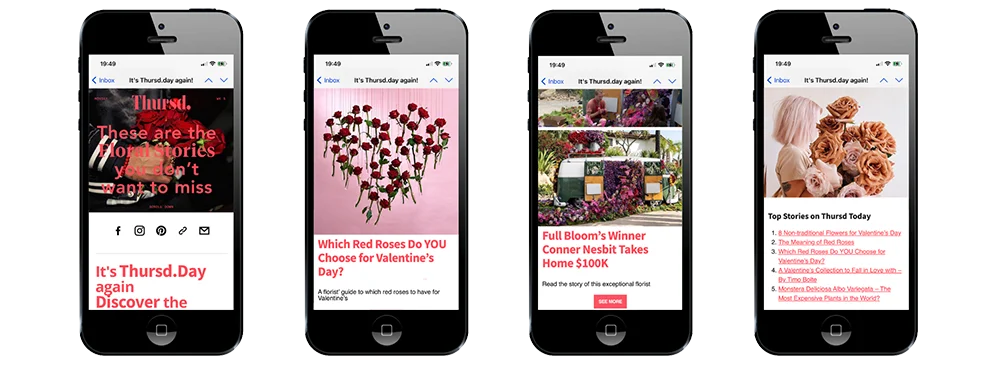Across cultures and continents, pink flowers remain one of the most requested colors in floral design. From soft blush tones to deep magentas, pink flowers hold a broad emotional spectrum—from tenderness and admiration to elegance and quiet strength.
In today’s floral world, pink is no longer just a romantic gesture. It’s a strategic color—used in branding, storytelling, and emotional design. Whether it’s a pink rose in a wedding bouquet or a seasonal peony for an editorial shoot, the message behind the flower matters, and for those working in floriculture, color is more than preference—it’s purpose.
What Do Pink Flowers Symbolize?
The meaning of pink flowers stretches far beyond their delicate appearance. Traditionally associated with love, femininity, and youth, pink has evolved into a color that also represents gratitude, admiration, and even empowerment—the tone of pink used—whether pale or bold—can shift its interpretation.
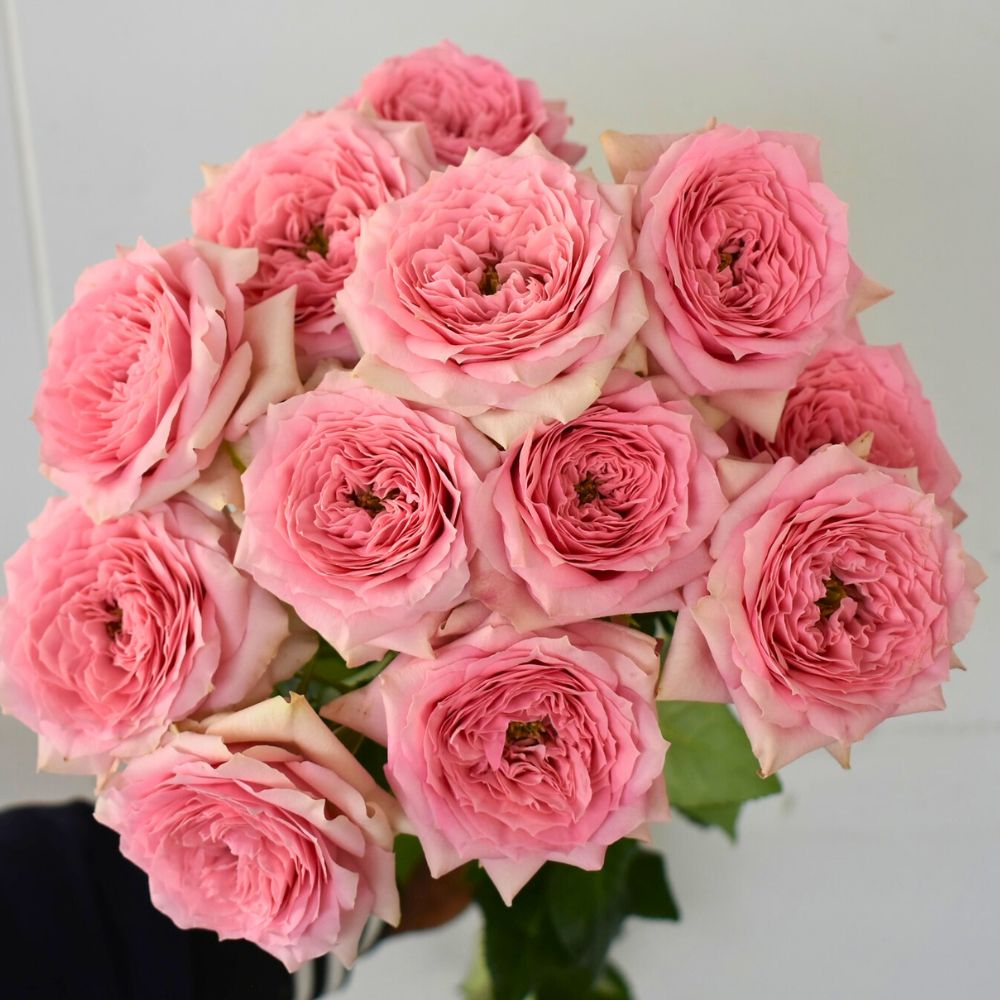
- Soft pinks often symbolize gentleness, grace, or innocence.
- Bright pinks and fuchsias may convey energy, confidence, and charisma.
- Muted, dusty pinks can express thoughtfulness or vintage romance.
Cultural significance plays a role as well. In many Western countries, pink is tied to affection and celebration, while in some Eastern cultures, it represents prosperity and renewal. For florists and designers, these meanings influence how pink flowers are paired, packaged, and presented. For growers and breeders, consumer preference for specific shades of pink can influence entire production decisions.
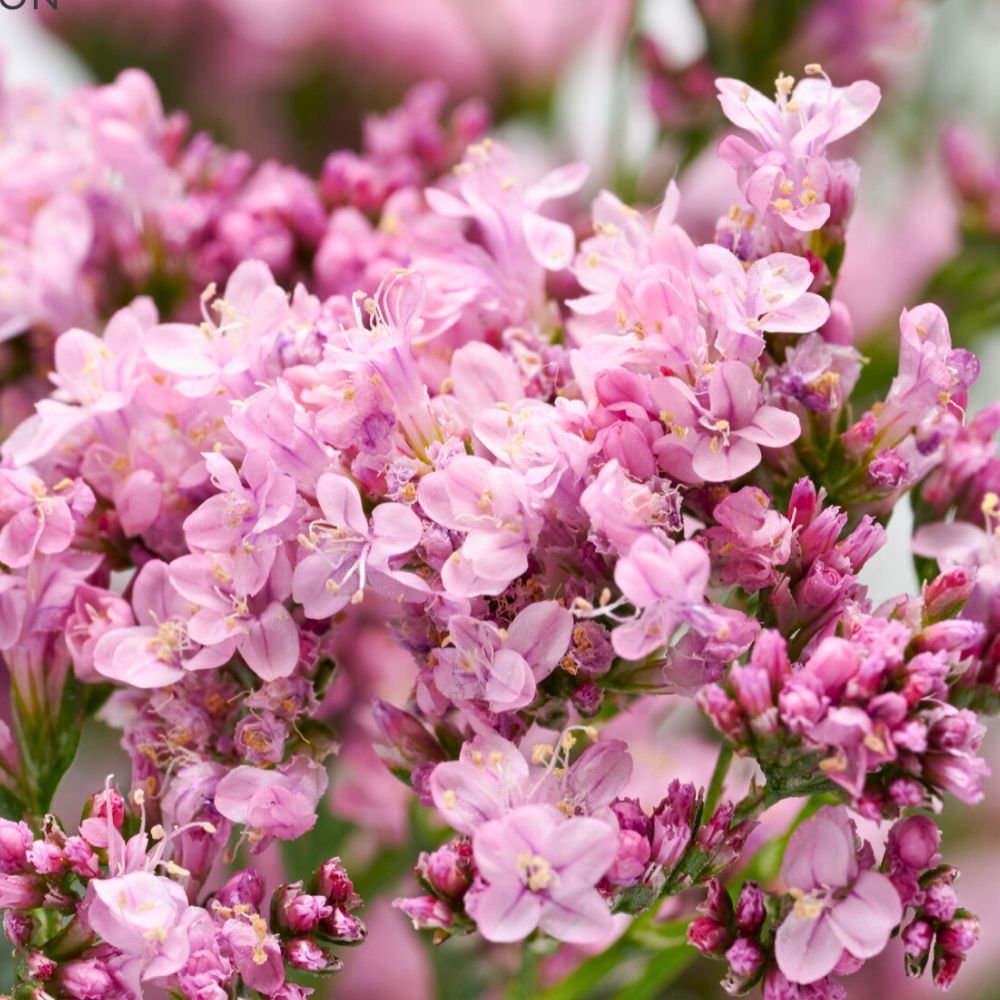
Understanding what pink flowers symbolize helps floral professionals craft more intentional, meaningful arrangements. Whether working with roses, Hydrangeas, or Chrysanthemums, color isn’t just aesthetic—it’s part of the message.
Iconic Pink Flowers and Their Specific Meanings
Some pink flowers have established themselves as universal messengers of emotion. Their meaning is widely recognized and often requested by clients for weddings, birthdays, and sympathy occasions. Here's a closer look at four of the most iconic:
Pink Rose
Meaning: Admiration, grace, happiness
The pink rose remains one of the most popular choices for personal expression. It’s soft enough for thank-you bouquets, but strong enough for weddings and brand storytelling. Growers around the world—from Kenya to Colombia—consistently dedicate acreage to pink varieties due to demand. Breeders like United Selections, Rosen Tantau, Jan Spek Rozen, and De Ruiter, among others, continue to develop pink cultivars with improved vase life and color retention.
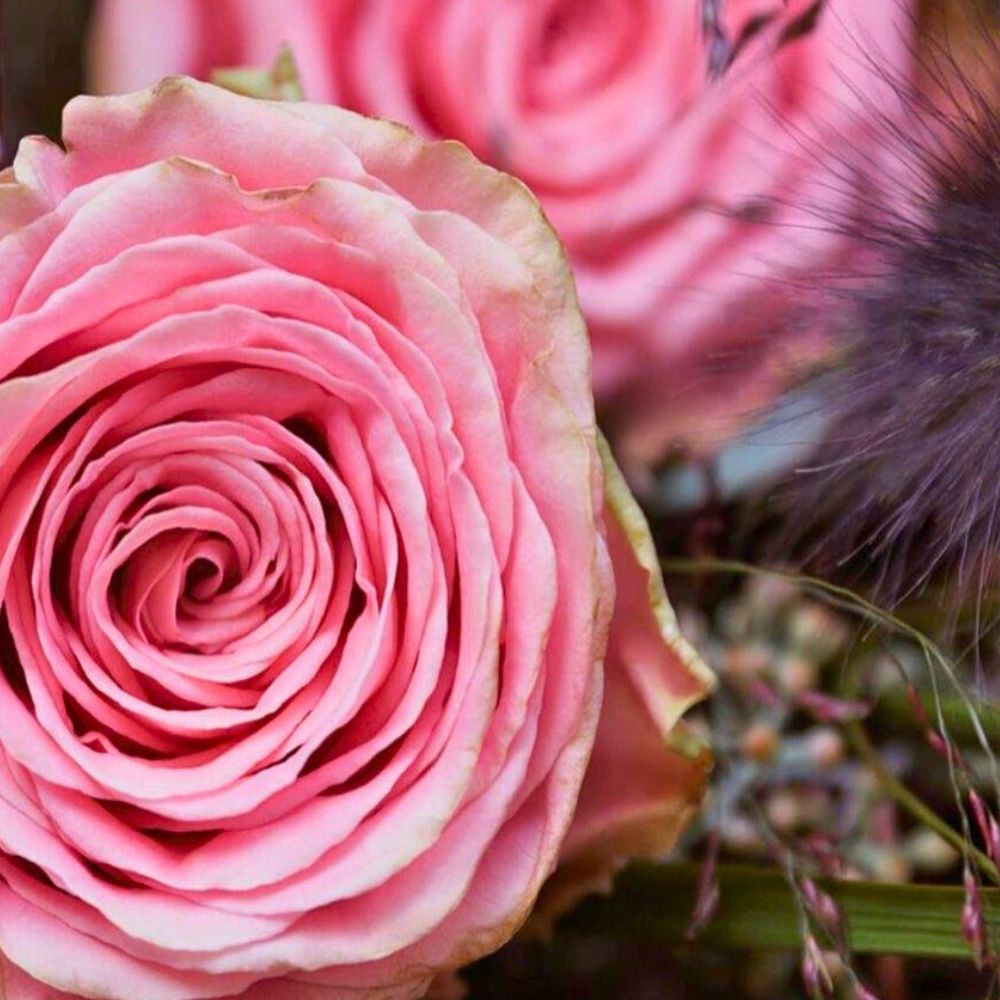
Pink garden roses—especially old English and shrub types—are also cherished for their fragrance, form, and ability to enhance residential spaces with romance and elegance.
Pink Carnation
Meaning: Gratitude, remembrance, maternal love
Carnations (botanical: Dianthus) may be classic, but pink varieties still feel relevant, especially during Mother’s Day and memorial events. Their ruffled form and affordability make them versatile for everything from large-scale events to sympathy sprays. Breeders like HilverdaFlorist, Royal Van Zanten, and Selecta Cut Flowers have refined their color ranges to appeal to contemporary designers.
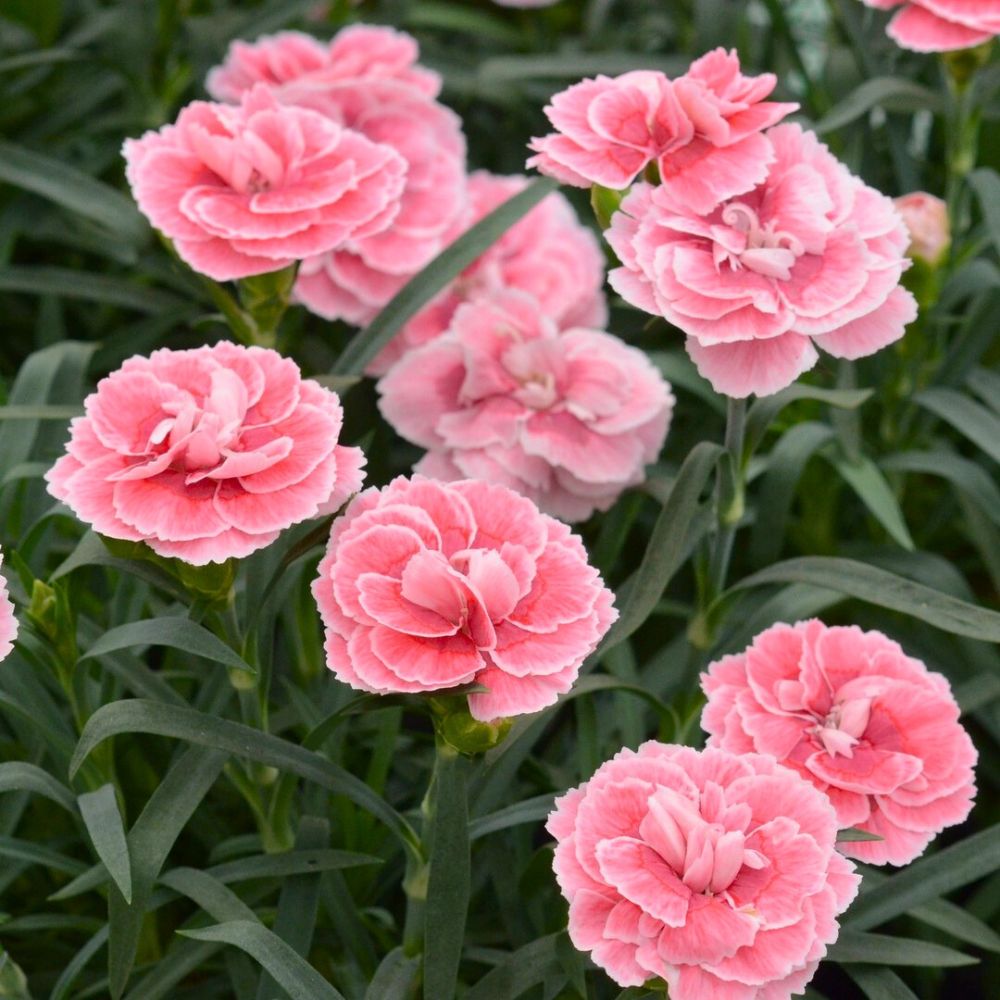
Carnations are also popular with home gardeners, thriving in sunny beds and borders where their ruffled blooms add texture and color from spring through summer.
Pink Chrysanthemum
Meaning: Longevity, compassion, support
In markets across Asia and Europe, pink mums are associated with sympathy and healing. But their meaning is expanding, especially as hybrid varieties appear in more wedding and fall arrangements. Floritec, Icon Selections, and Dekker Chrysanten are key players offering pink varieties tailored for cut flower longevity.
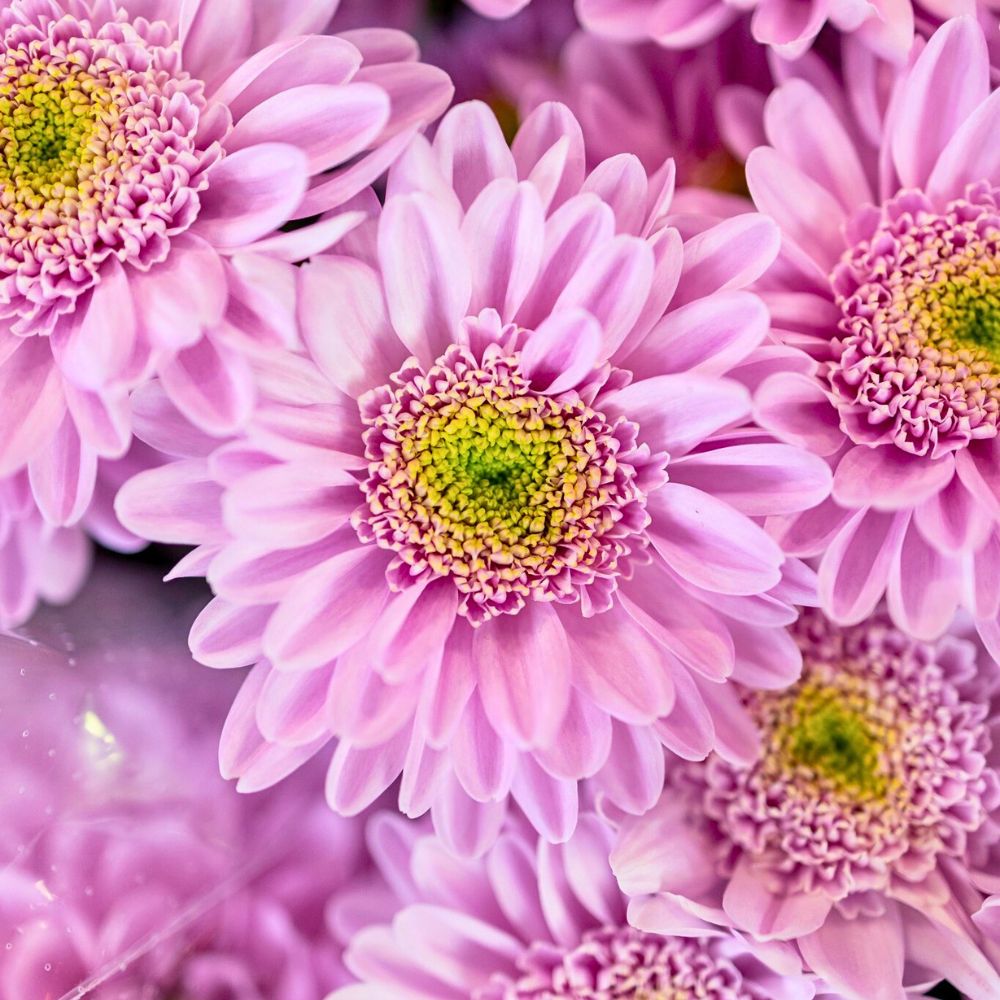
Hardy garden mums are a staple in fall landscapes. Pink varieties offer seasonal impact in containers, flower beds, and mixed perennial borders.
Pink Daisy
Meaning: Innocence, cheerfulness, simplicity
Often used in casual or youthful arrangements, pink daisies bring optimism and approachability to floral compositions. They’re easy to pair with stronger focal flowers or stand alone in cheerful bunches. Spray daisies from Royal Van Zanten, for example, are favored for their balance of structure and softness.
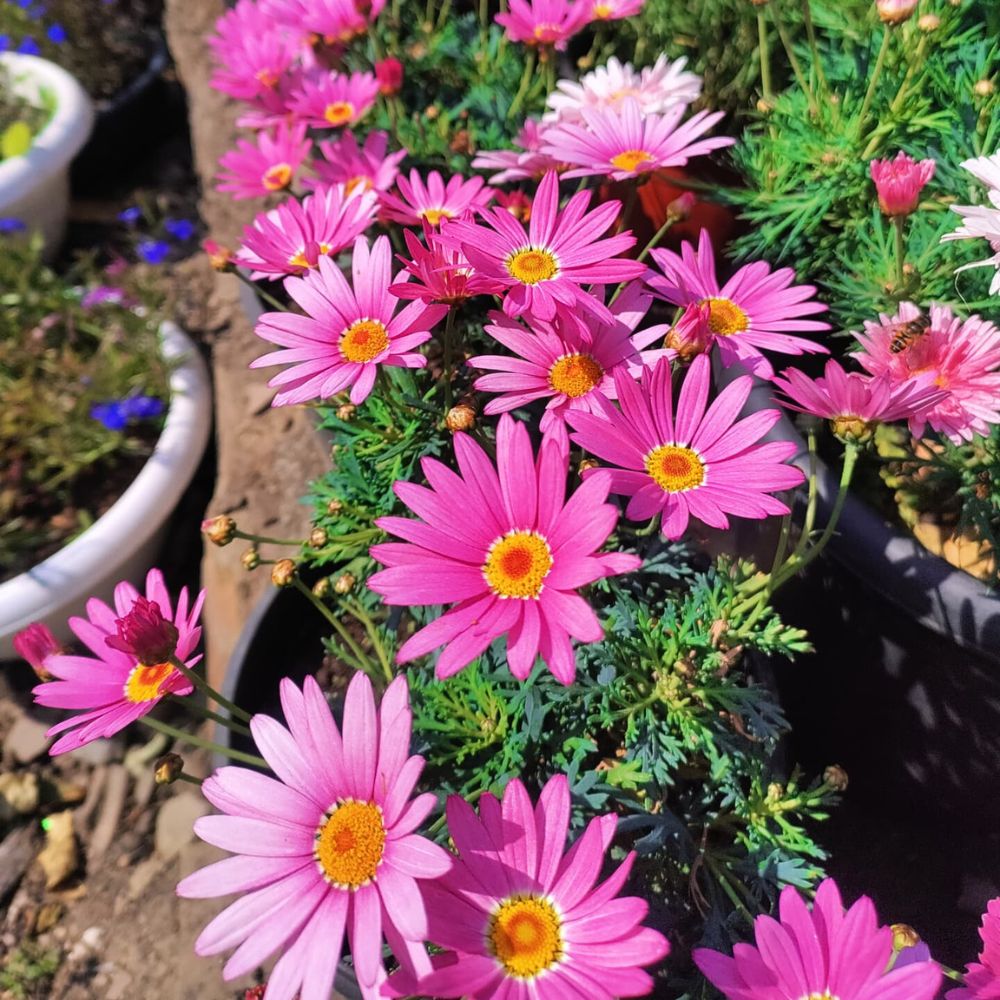
Pink Daisies, including gerbera and marguerite types, thrive in garden borders and containers, bringing joyful color to patios and pathways throughout spring and summer.
More Pink Flowers Worth Noting
Beyond the well-known roses, carnations, and Chrysanthemums, many other pink-toned flowers have earned their place in modern floral design. These varieties may be more seasonal, specialized, or exotic, but they carry equally powerful meaning—and offer growers and florists a chance to stand out.
Pink Tulip
Meaning: Affection, hope, confidence
Pink tulips are widely associated with spring and emotional renewal. Their clean lines and smooth petals make them popular in contemporary arrangements and mono-bouquets. Dutch breeders continue to lead global production, supplying high-quality pink tulips that dominate markets from Europe to Asia. Their seasonal nature adds to their perceived value.
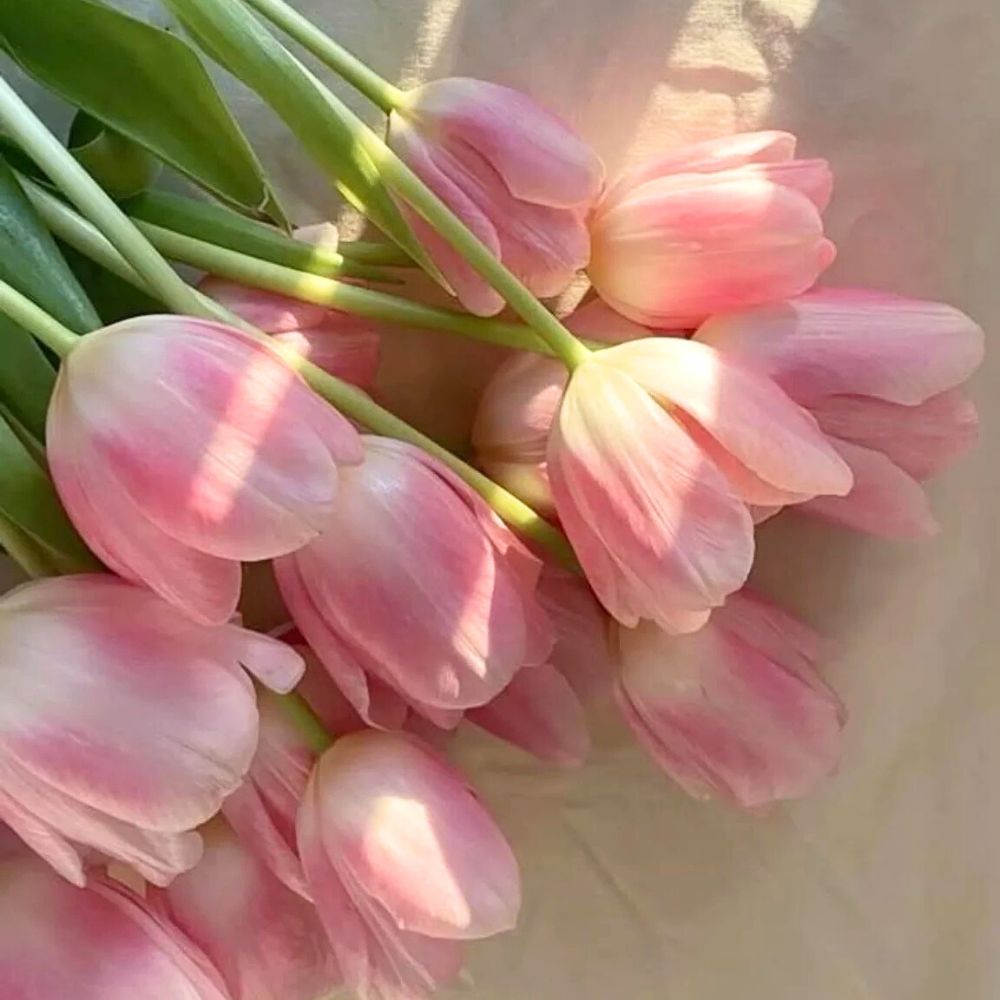
Tulips are among the most beloved spring bulbs. Pink varieties are frequently planted in gardens for their early-season color and symbolic charm.
Pink Lily
Meaning: Femininity, admiration, prosperity
With large, bold blooms, pink lilies are often used in sympathy, celebration, and luxury gifting. Oriental types like the popular Lily Stargazer remain a florist favorite for their fragrance and vibrant presence. Growers across Israel, Colombia, and Europe continue to supply these staples, with breeders like Mak Breeding developing improved shades and shapes.
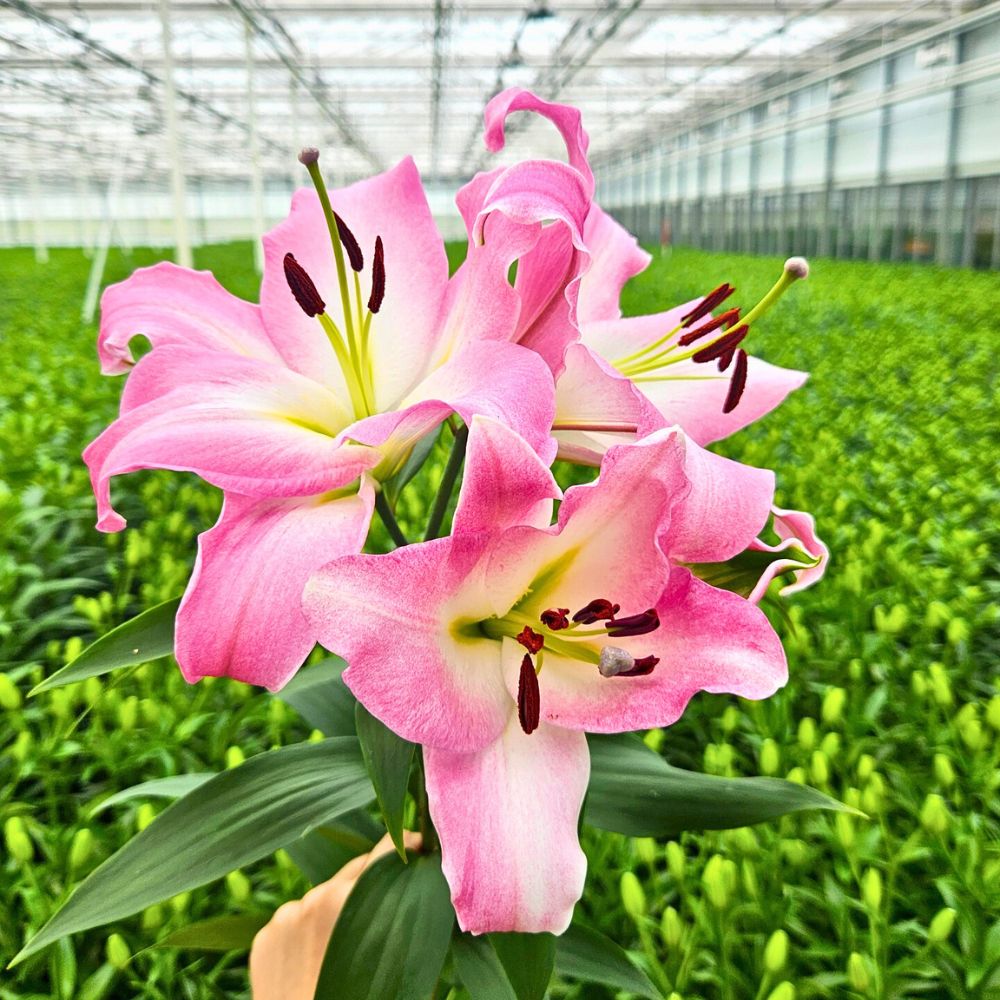
Many pink lily varieties—particularly Asiatic and Oriental hybrids—are grown in home gardens for their fragrance and height, often acting as striking focal points in summer borders.
Pink Hydrangea
Meaning: Abundance, heartfelt emotion
Hydrangeas in soft or saturated pinks offer lush volume for event work and installations. Their color can shift depending on soil acidity, which means growers may adapt their crop strategy to target specific tones. Hortensias signal fullness, making them especially effective in conveying emotional depth or seasonal opulence.
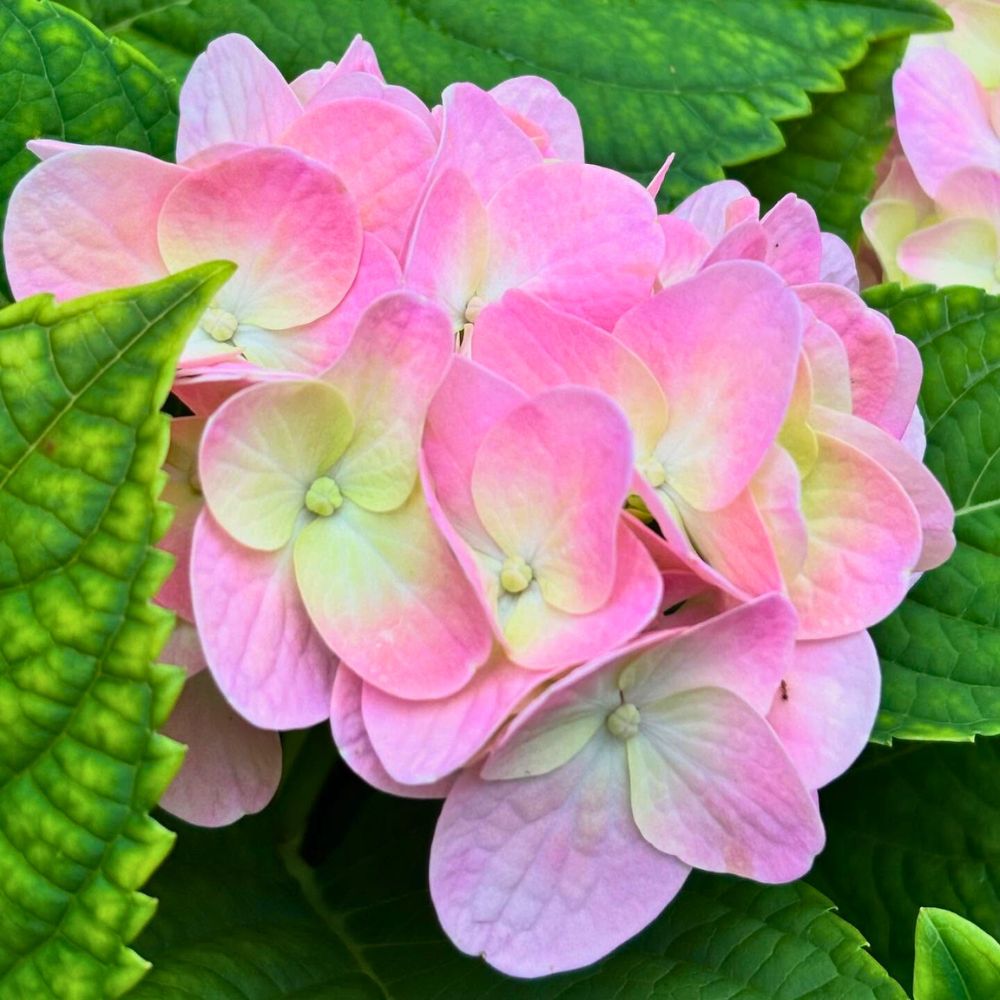
In temperate climates, pink Hydrangeas like Hydrangea macrophylla add seasonal drama to garden landscapes and perform well in both borders and large containers.
Pink Peony
Meaning: Romance, prosperity, bashfulness
With their layered, romantic form, pink peonies are high-demand flowers during spring and early summer. Their short season adds to their exclusivity, making them a sought-after focal point in wedding and editorial design. They’re also a favorite among breeders and exporters from France, the Netherlands, Chile, and Alaska.
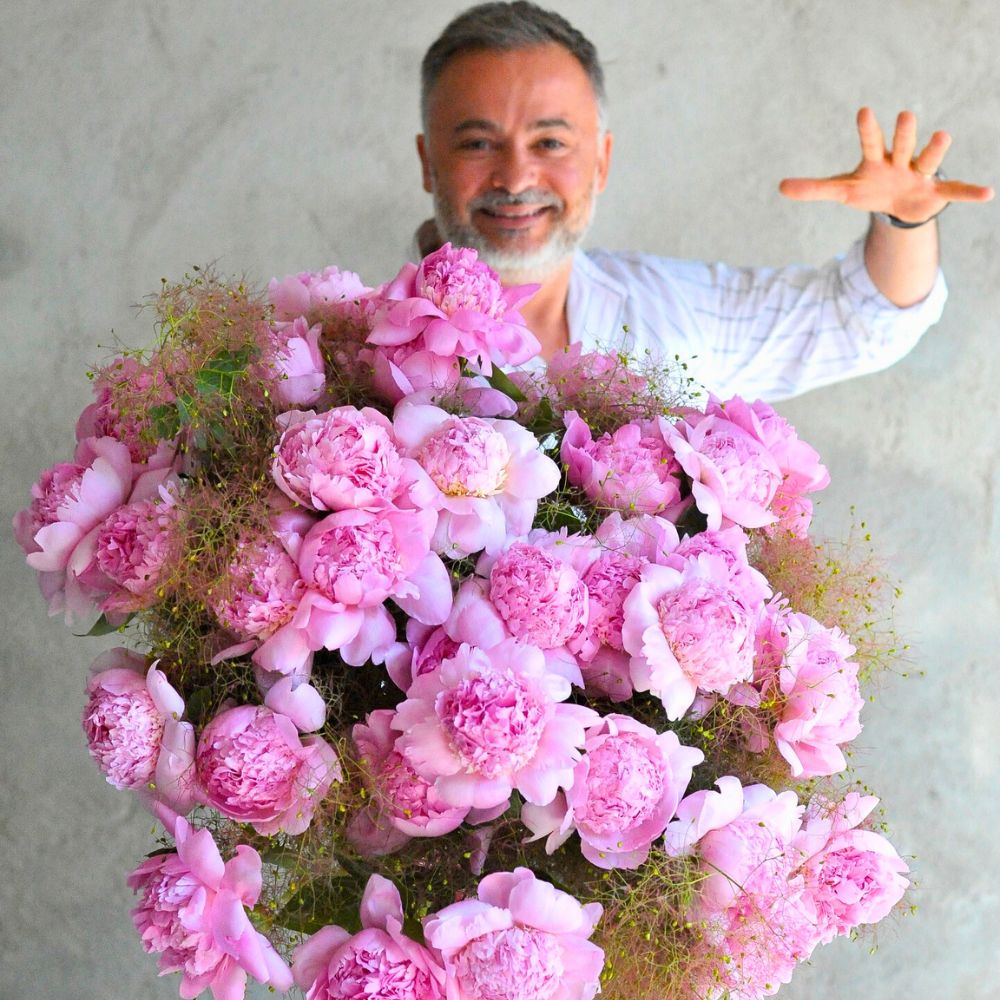
Peonies are also a favorite in perennial gardens, where pink varieties bloom reliably year after year with minimal care.
Pink Gerbera
Meaning: Cheerfulness, admiration
Pink Gerbera daisies make a bold statement with their simple form and saturated color. Commonly used in cheerful or youth-focused bouquets, they provide a strong visual contrast and work well in modern designs. Their availability year-round makes them a steady choice for florists worldwide.
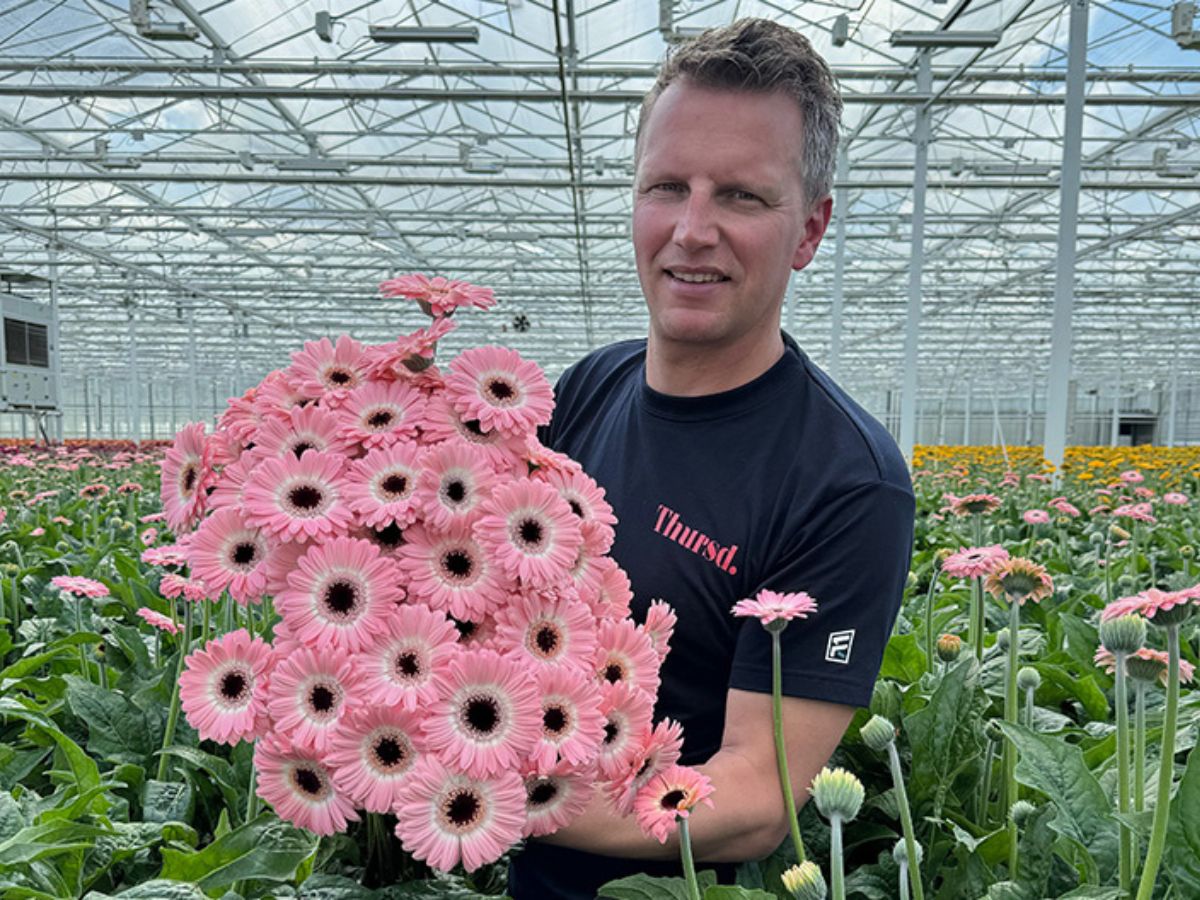
In warm climates, Gerberas can also be grown outdoors, often planted in containers or garden beds for a pop of color.
Pink Ranunculus
Meaning: Charm, delicate attraction
These soft, papery blooms have gained popularity for their vintage look and wedding appeal. Their delicate nature belies their impact, especially in pastel palettes. Ranunculus are grown in warmer European climate zones, such as Italy, seasonally in Holland and Kenya, and in high-altitude regions like Ecuador and Colombia, where the climate favors clean stems and defined structure. Prominent growers Piazza dei Fiori (Italy), Tessa, and Floraprima (Ecuador) offer a wide range of Ranunculus, with impeccable quality.
To learn more about Ranunculus, check out the bright and must-have Ranunculus from Tessa, the seasonal Butterfly Ranunculus from Dutch/Kenyan grower Monarch, or the Italian Ranunculus from Piazza dei Fiori.
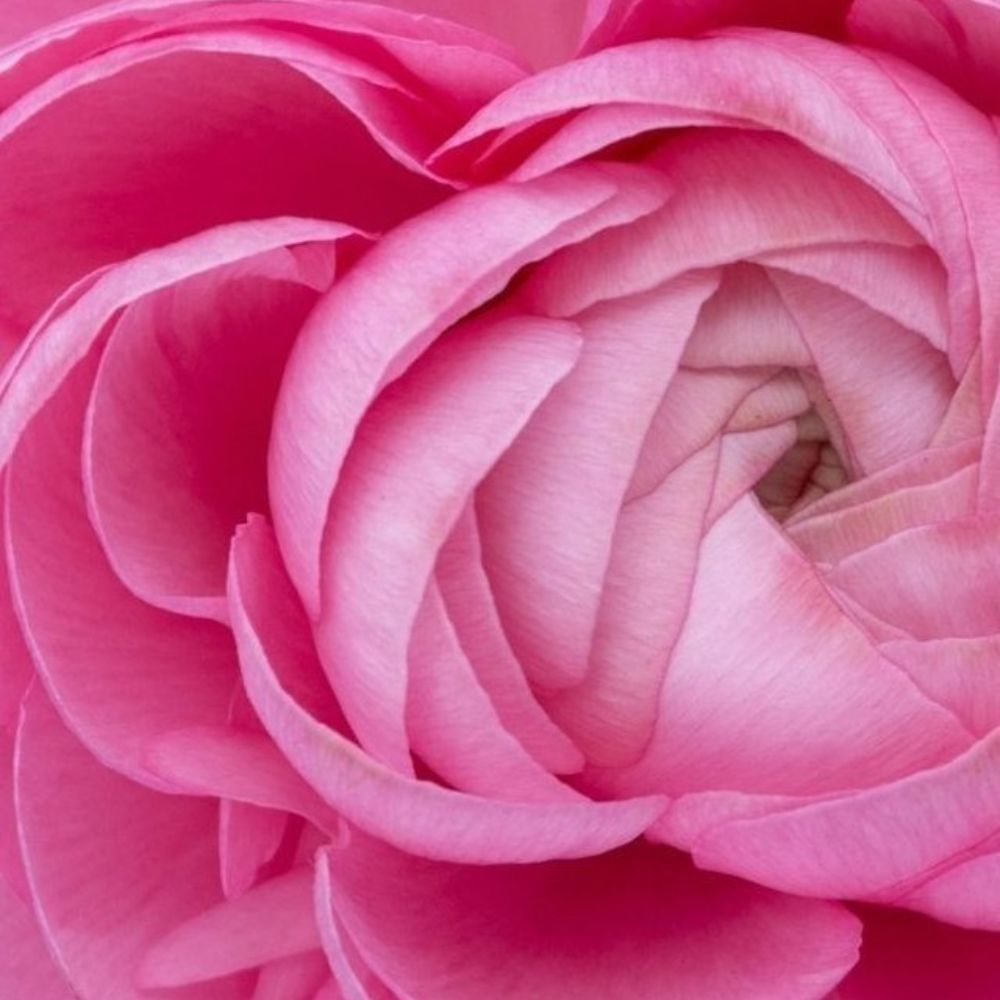
Pink Lisianthus
Meaning: Appreciation, elegance, charisma
Lisianthus (botanical: Eustoma) is often chosen as a rose alternative. With layered petals and excellent vase life, pink Lisianthus adds a touch of elegance to everything from romantic bouquets to formal tributes. Breeders like Sakata and Sumika continue to refine pink tones for better uniformity and shipping quality.
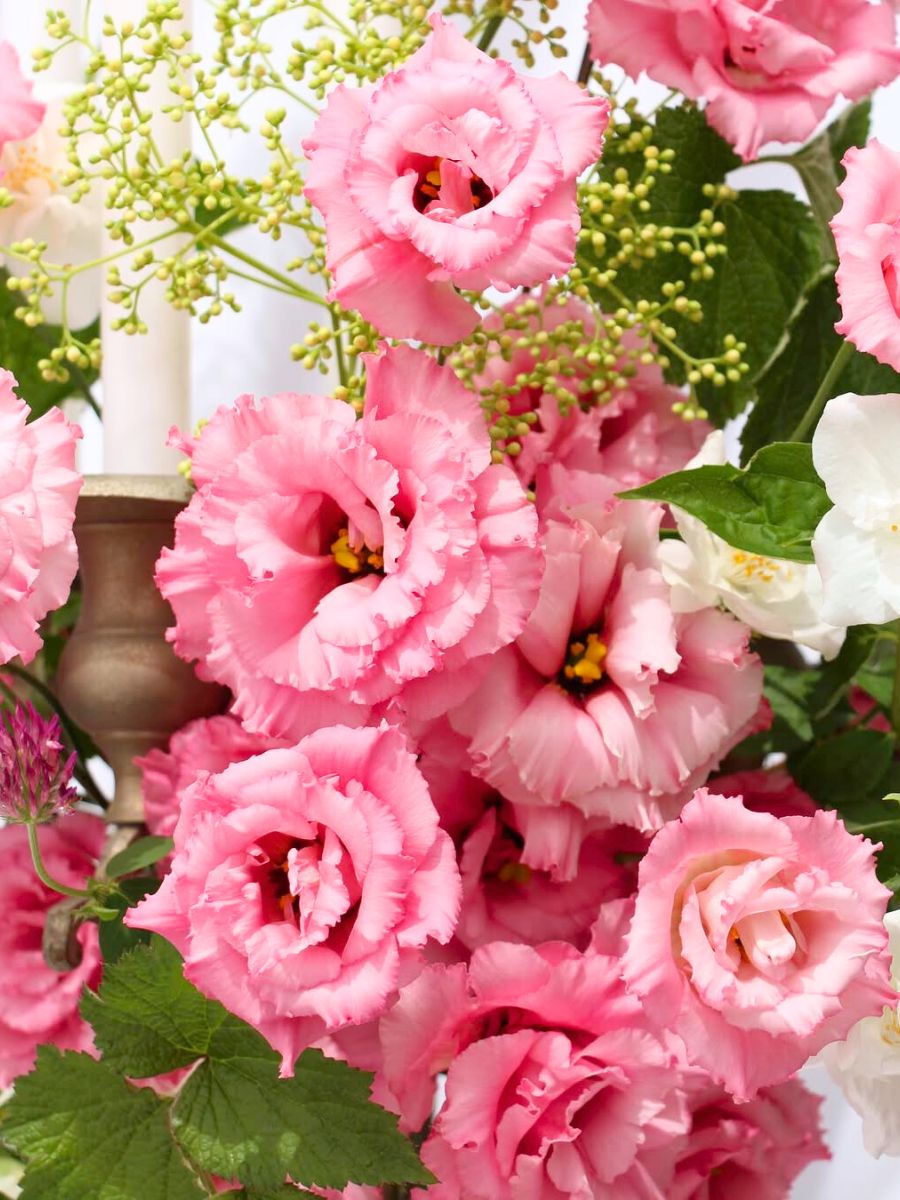
Pink Alstroemeria
Meaning: Friendship, lasting support
Alstroemeria may be viewed as a filler flower, but pink varieties hold strong emotional meaning. Their long vase life and affordability make them a staple in mixed bouquets across retail and mass market channels. Breeders like Könst Alstroemeria and Royal Van Zanten are constantly working on new patterns and bicolor pinks for better commercial appeal.
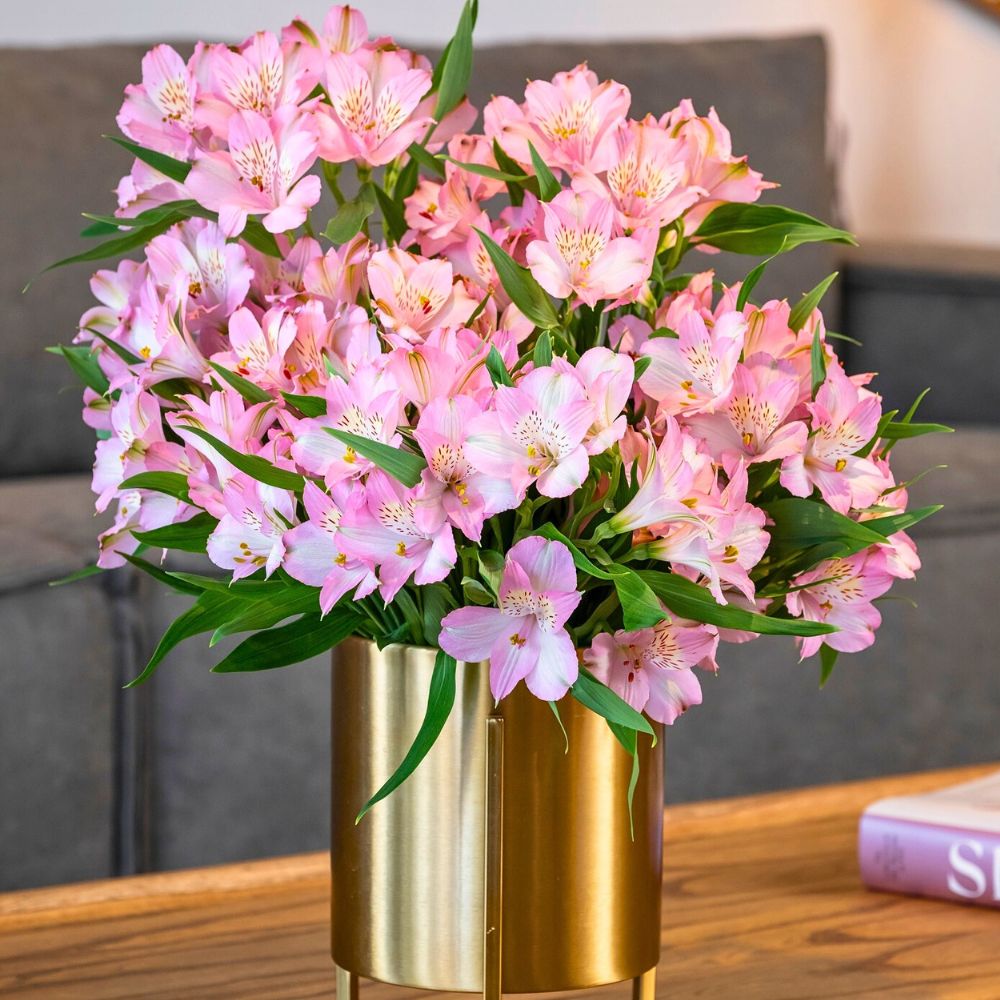
Alstroemeria, or Peruvian lily, can also be grown in home gardens with minimal care, especially in temperate zones where they return each year. Potted Alstroemerias are also becoming more common and widely accepted in European markets.
The Role of Pink Flowers in Floral Design
In today’s visually driven floral industry, color does more than decorate—it communicates. For florists and floral creatives, pink remains a go-to choice for its emotional versatility and visual strength. Whether soft and romantic or bold and modern, pink flowers play a key role in how floral designs are received and remembered.
Color Strategy in Floral Design
Designers often use pink as a base or accent color in arrangements because of its wide spectrum.
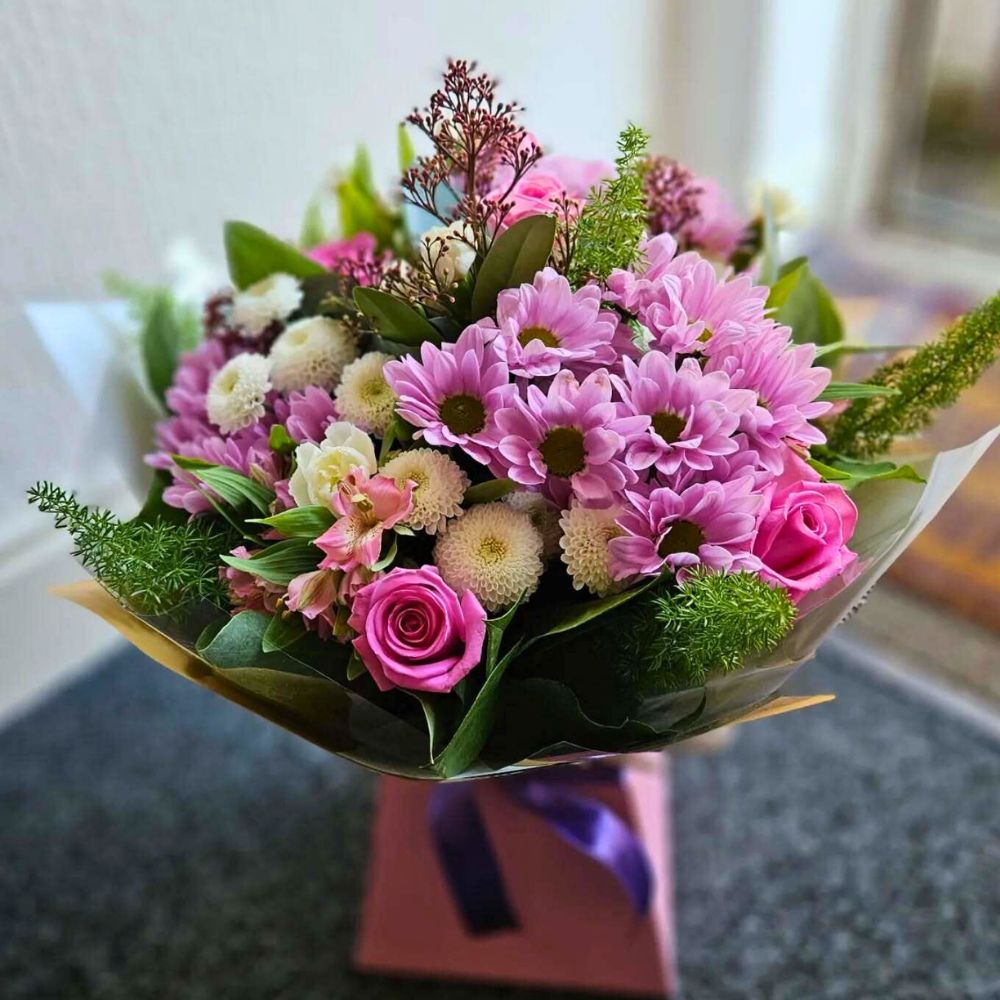
- Pale pinks evoke softness and sincerity, often appearing in bridal and baby-themed florals.
- Mid-toned pinks offer a feeling of optimism and warmth, used in everyday gifting and springtime palettes.
- Hot pinks and fuchsias inject energy, used in bold monochromatic designs or combined with tropicals.
Florists build entire collections around pink for seasonal campaigns or brand identity. Pink flowers also pair well with neutrals, burgundy, coral, or even citrus tones, making it a strategic connector in color theory.
Visual and Social Media Impact
For floral influencers and studios focused on digital storytelling, pink performs well. It pops in photography, flat lays, and installations, making it a reliable option for social media, websites, and promotional visuals.
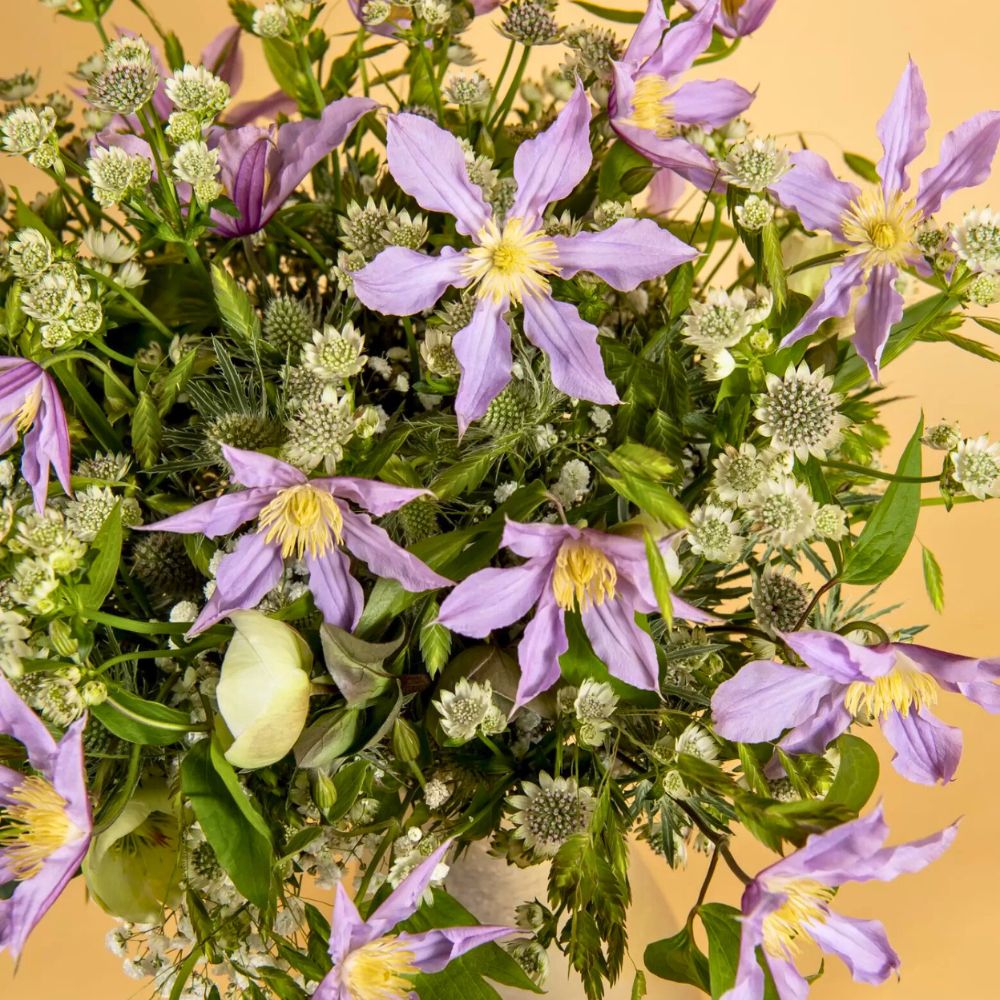
Platforms like Instagram and Pinterest often favor pink aesthetics in their algorithms, pushing pink-themed posts higher in visibility. Whether it’s a soft, romantic feed or a high-energy brand tone, pink creates emotional stickiness that viewers connect with.
How Breeders and Growers Respond to Demand for Pink Flowers
In floriculture, color isn’t just a design element—it’s a commercial driver. Few colors maintain consistently high demand across global markets like pink flowers do. For breeders and growers, understanding pink flowers isn’t just philosophical—it shapes real decisions in breeding trials, production planning, and export strategy.
Breeders: Innovating Within the Pink Spectrum
Breeders are continuously refining pink varieties to meet both symbolic and practical needs. From adjusting undertones (cool vs. warm pink) to improving vase life, disease resistance, and transport durability, pink remains a key focus in cut flower breeding programs.
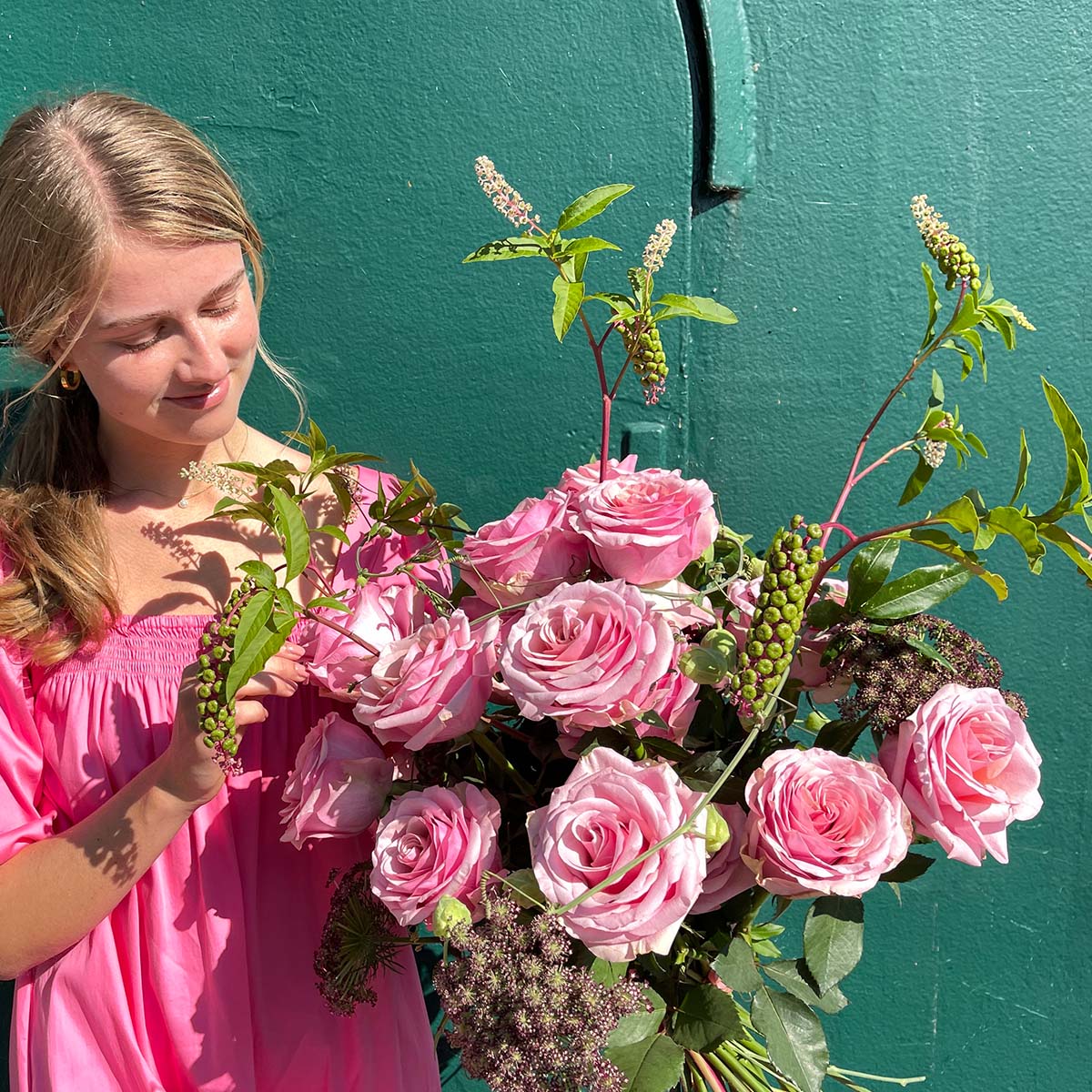
For example:
- Rose breeders like De Ruiter and Meilland, among others, invest in developing new pink cultivars with longer shelf life, better petal texture, significant production, and better shape.
- Chrysanthemum breeders such as Floritec and Dekker regularly release pink varieties adapted for different light zones or event markets.
- Alstroemeria and Lisianthus breeders prioritize color uniformity and shading precision, important when florists need consistency for high-end installations.
Growers Meeting Market Preferences
Growers worldwide recognize that pink flowers often move faster in wholesale markets, especially around specific dates like Women’s Day, Mother's Day, and wedding season.

In Kenya, for example, different rose farms dedicate significant acreage to intermediate and premium pink roses due to steady European and Middle Eastern demand. In Colombia and Ecuador, pink peonies and ranunculus are grown for time-sensitive shipping during spring peaks.
Even production planning considers color as a factor—pink flowers with strong head size and color retention are prioritized for air freight exports, ensuring visual integrity upon arrival.
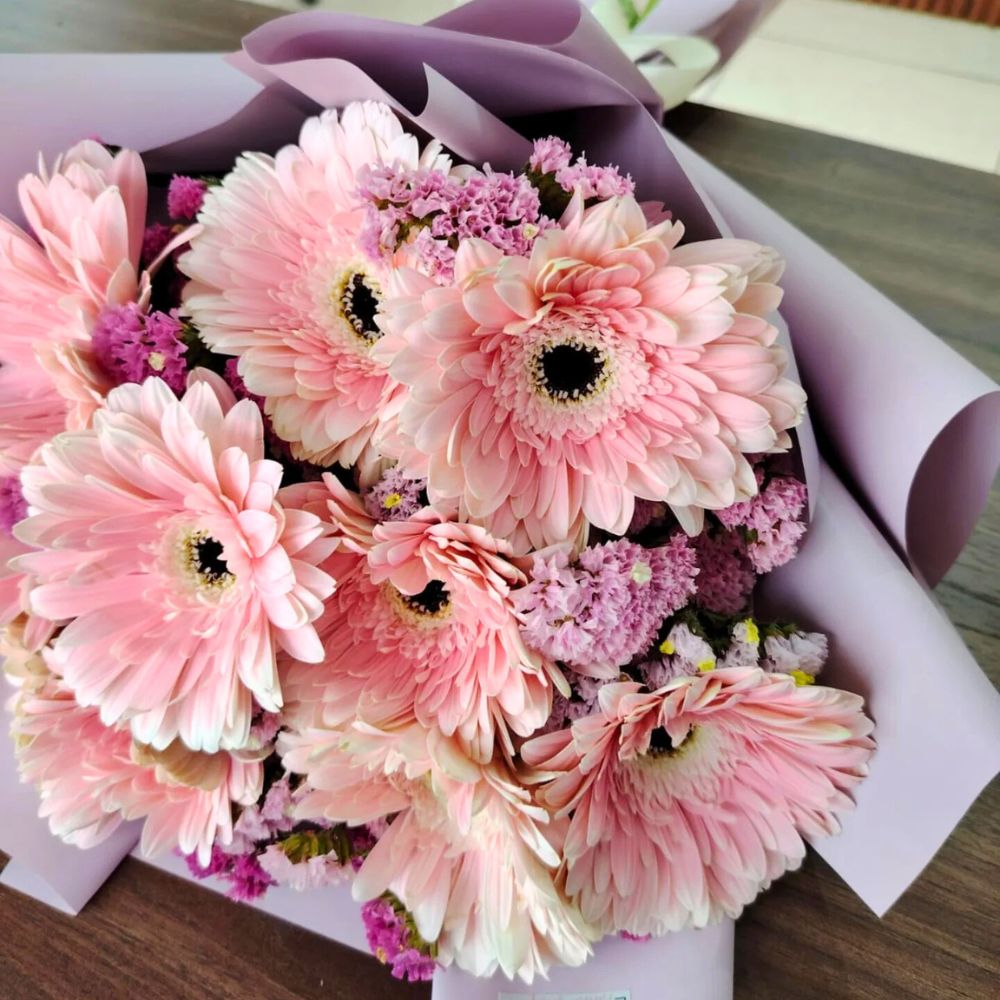
In a fast-evolving floral industry, pink flowers remain remarkably steady. Its meaning—rich with emotion, elegance, and adaptability—makes it one of the most trusted choices in design, production, and storytelling. From the delicate symbolism of a pink rose to the energetic flair of a hot pink gerbera, this color continues to shape how people experience flowers.
For breeders, pink is a perennial focus in variety development. For growers, it’s a commercially reliable investment. For florists and designers, it offers unmatched versatility across events, markets, and visual narratives. And for floral influencers, it’s a color that connects—both on-screen and in sentiment.
Header image by @Ionel Feature image by @Floraria Iris.

